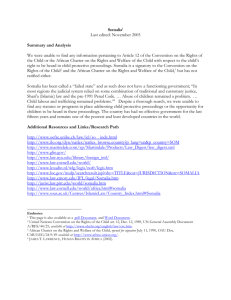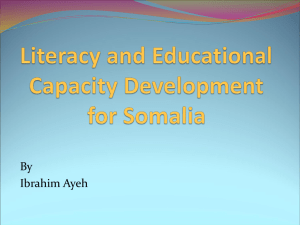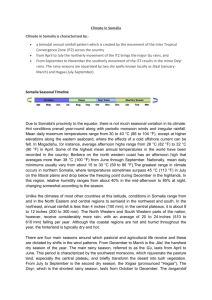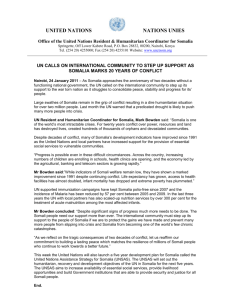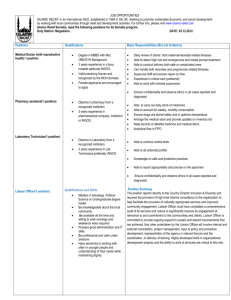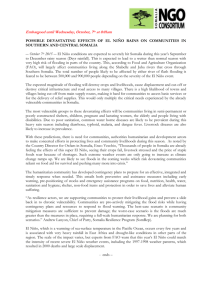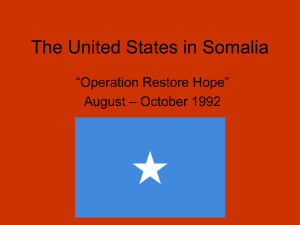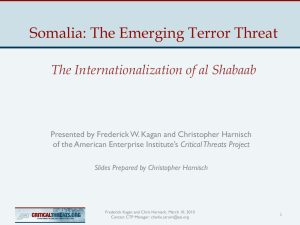John Kisilu Reuben - Faculty of Arts
advertisement
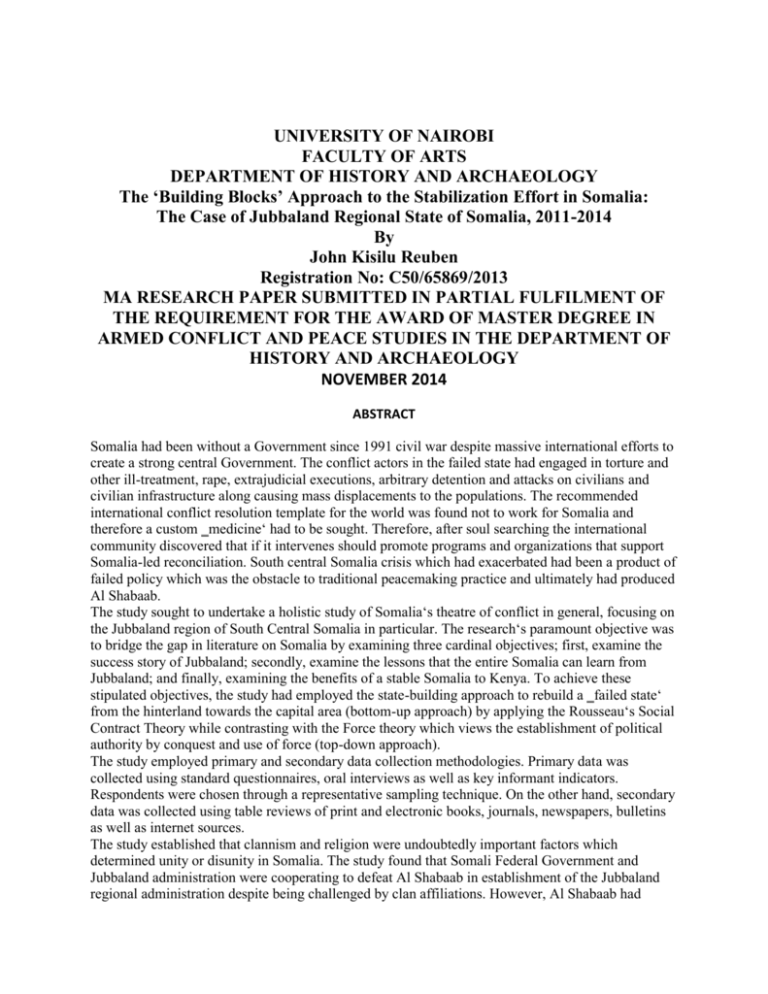
UNIVERSITY OF NAIROBI FACULTY OF ARTS DEPARTMENT OF HISTORY AND ARCHAEOLOGY The ‘Building Blocks’ Approach to the Stabilization Effort in Somalia: The Case of Jubbaland Regional State of Somalia, 2011-2014 By John Kisilu Reuben Registration No: C50/65869/2013 MA RESEARCH PAPER SUBMITTED IN PARTIAL FULFILMENT OF THE REQUIREMENT FOR THE AWARD OF MASTER DEGREE IN ARMED CONFLICT AND PEACE STUDIES IN THE DEPARTMENT OF HISTORY AND ARCHAEOLOGY NOVEMBER 2014 ABSTRACT Somalia had been without a Government since 1991 civil war despite massive international efforts to create a strong central Government. The conflict actors in the failed state had engaged in torture and other ill-treatment, rape, extrajudicial executions, arbitrary detention and attacks on civilians and civilian infrastructure along causing mass displacements to the populations. The recommended international conflict resolution template for the world was found not to work for Somalia and therefore a custom ‗medicine‘ had to be sought. Therefore, after soul searching the international community discovered that if it intervenes should promote programs and organizations that support Somalia-led reconciliation. South central Somalia crisis which had exacerbated had been a product of failed policy which was the obstacle to traditional peacemaking practice and ultimately had produced Al Shabaab. The study sought to undertake a holistic study of Somalia‘s theatre of conflict in general, focusing on the Jubbaland region of South Central Somalia in particular. The research‘s paramount objective was to bridge the gap in literature on Somalia by examining three cardinal objectives; first, examine the success story of Jubbaland; secondly, examine the lessons that the entire Somalia can learn from Jubbaland; and finally, examining the benefits of a stable Somalia to Kenya. To achieve these stipulated objectives, the study had employed the state-building approach to rebuild a ‗failed state‘ from the hinterland towards the capital area (bottom-up approach) by applying the Rousseau‘s Social Contract Theory while contrasting with the Force theory which views the establishment of political authority by conquest and use of force (top-down approach). The study employed primary and secondary data collection methodologies. Primary data was collected using standard questionnaires, oral interviews as well as key informant indicators. Respondents were chosen through a representative sampling technique. On the other hand, secondary data was collected using table reviews of print and electronic books, journals, newspapers, bulletins as well as internet sources. The study established that clannism and religion were undoubtedly important factors which determined unity or disunity in Somalia. The study found that Somali Federal Government and Jubbaland administration were cooperating to defeat Al Shabaab in establishment of the Jubbaland regional administration despite being challenged by clan affiliations. However, Al Shabaab had managed to conquer clannism by emphasizing on religious ideology. The inclusion of women and other civilian elements in the formation of Jubbaland were the recipes for success in the formation of the regional administration. The study found that power sharing played more important than reconciliation among the Somalia conflict resolution players. The Somalia conflict resolution efforts were challenged as there were competing regional and international interests. Ethiopia played as a peace mediator in the case of Jubbaland contrary to its previous mediations contributions when it had played as a spoiler. Kenya who had made significant political and military support towards the stabilization efforts in Somalia stood to benefit as the challenge of hosting the Somali refugees would be addressed. In addition, the insecurity created by the volatile state in Somalia and consequential under –development in Northern Kenya would be remedied. The successful formation of Somaliland ,Puntland and now Jubbaland had barred any other option of stabilizing Somalia save for the_ building blocks approach .The rest of South Central Somalia had Jubbaland as an example since they were to be formed when the Somalia State as a major actor was in existence.
